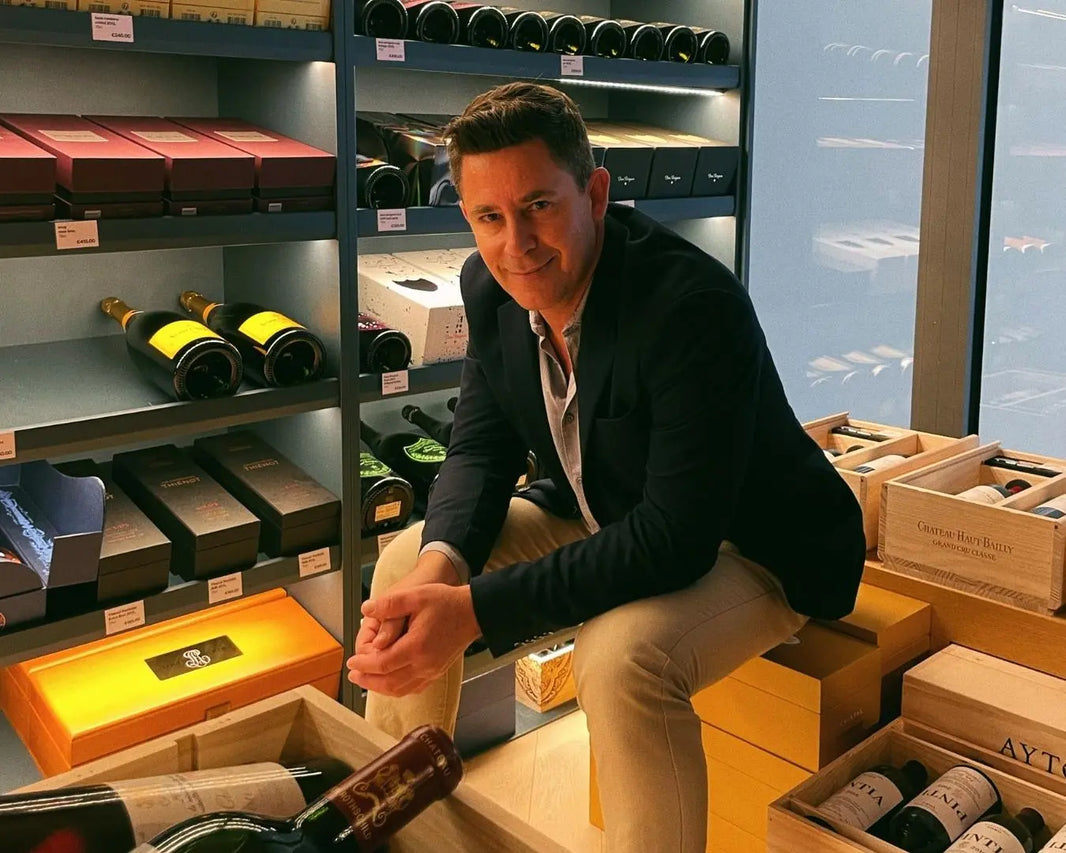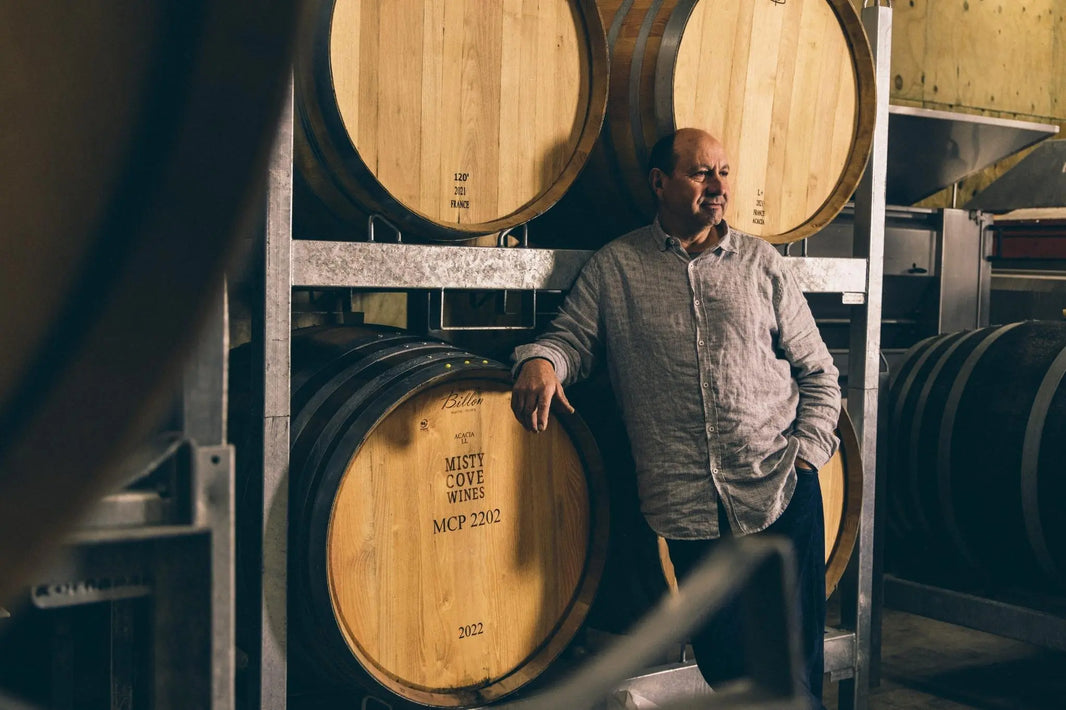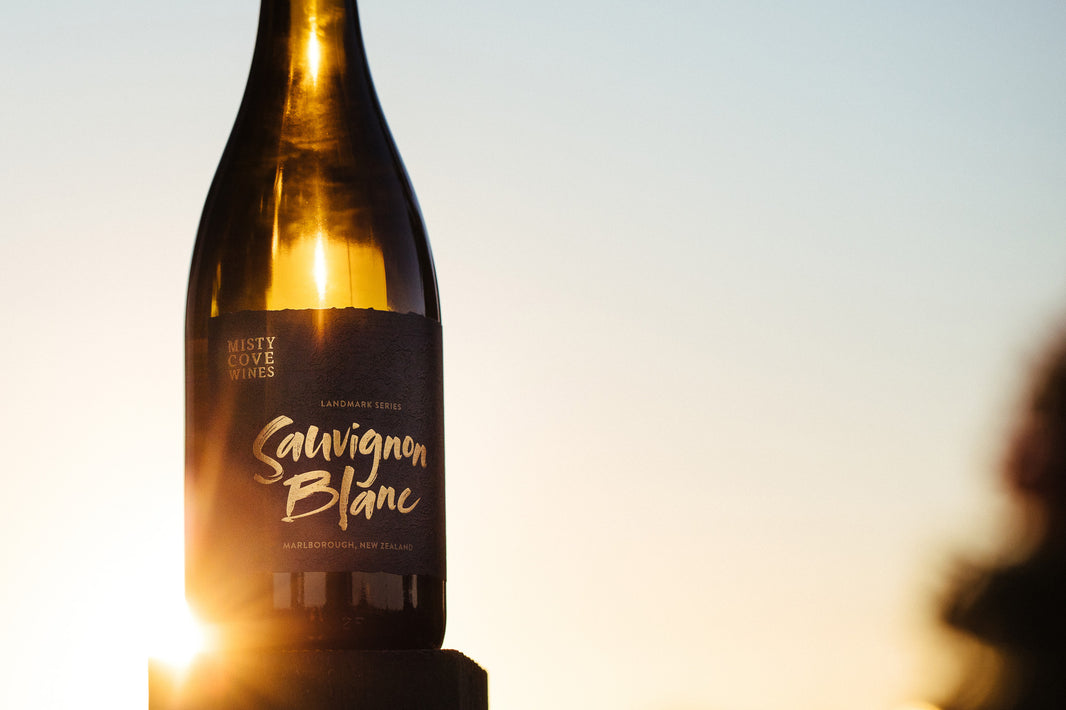
Ask any winemaker and they’ll tell you that the flavour and characteristics of a wine shouldn’t be overly influenced by the wood during fermentation. Instead, the wood is intended to support the wine – and merely add a little ‘spice’. It’s a balancing act between the flavours of the wood and the fruit.

Time to get down to brass tacks and put the man on the spot. So, Emmanuel what is acacia anyway?
Firstly, it’s native to America and it was brought over to Europe in the 17th century. Its common name is Black Locust tree. And it's actually a family of the legume, so it's a legume. Acacia, which comes from forests in northern France, is sawed rather than split into staves, and is now used by a handful of wineries worldwide.
When it was brought over to Europe, they grew it in the same forests as oak. The difference between Acacia and oak, is it takes 200 years before you can fell/harvest an oak tree and make barrels, whereas the wattle or the pseudoacacia can be felled in 80 to 120 years. So, it's far more sustainable.

Robinia Pseudoacacia - or the 'Black Locust' tree - the key source of acacia wood for wine barrels and puncheons.'
When did you first discover and start using acacia as a winemaker?
I think I started using it about 10, or probably more. Maybe 15 years ago, I started using acacia here in New Zealand. But really, New Zealand hasn't used it much yet in winemaking. I mean, there's been the odd person trying it here and there. But it’s definitely not mainstream.
I like what is adds to the wine, so I've grown the program at Misty Cove.
Why do you like using acacia?
Because it's completely different to Oak. Oak gives you those toasty characters, and has a really strong influence on the wine’s aroma and flavour. So, you get that toasty character with oak wood. You also get vanillin flavours, and you get the tannins. Oak can add a lot to the wine, but it can also mask a lot of the wines fruit character.
Varietals that are less aromatic, like Chardonnay, I think oak works really well. But for aromatic whites, Gewürztraminer, Riesling, all of those, the oak tends to dominate the wine and suppress the fruit, whereas the acacia doesn't do that. Acacia wood doesn't add the ‘toastiness’, and it doesn't have all those vanillin flavours.
What acacia does do, is enhance the palate - gives it palate weight - but it also brings out that floral white flower character in the wines. It enhances the fruit of the wine. It enhances the palate without actually dominating the flavour. The trick is to not perceive the acacia when you’re tasting the wine. That’s the key.

Just two of our most popular wines from our acacia program - the Landmark Series Riesling and Grüner Veltliner.
Do you think you're one of the first people in New Zealand to be using acacia wood in winemaking?
I think there's been trials here before, but I do think Misty Cove are probably one of the few that use it consistently now. I did it deliberately with Riesling as a trial around 10 to 15 years ago and it worked really well. And from there we just grew it within Misty Cove.
We’ve be using it consistently in our Riesling, our Grüner Veltliner and Gewürztraminer. But we will also do a bone-dry Gewürztraminer, which is rather uncommon, but it works really well in the acacia, because the acacia gives the wine body and a bit of sweetness, but it's not sugar. So that works very well.
And of course, what's coming on board soon will be Viognier and Albariño.

You wouldn't use acacia for a wine like Sauvignon Blanc, then?
We will. At the moment we're doing an oaked Sauvignon Blanc, which is great. But I think we are wanting to move slowly away from the heavily oaked wines, and we are going to be bringing in the acacia and just a bit of oak. So, there's the combination.
That's pretty good. Can I ask, as from a regular consumer level - someone who's buying a wine without knowing too much about it - what would they notice about an acacia fermented wine versus all the others?
Okay – so take for example, Gewürztraminer. Traditionally it has always been made in old oak. Or it's fermented in a tank. So, you get a wine with that residual sugar. But with the acacia, you get the palate weight, and the wood enhances the floral character without the sugar. So, for a Gewürztraminer, you will definitely have a richer creamier texture to it with acacia. In short, we want the flavour and the great texture without the sugar. That’s a great benefit of using acacia.
So, what does the future look like for the acacia program within Misty Cove?
Well, I think this is going to be our signature. The acacia and aromatics. But watch this space.







